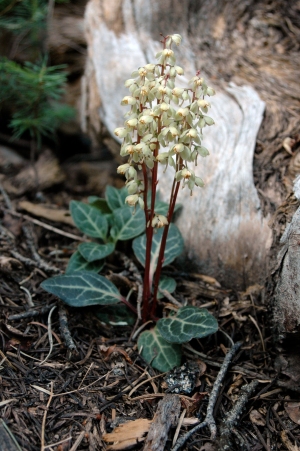
Pyrola is a genus of evergreen plants in the Heath family (Ericaceae) that captured me early in my botanical education and subsequently became the subject of many years of research. Many detailed descriptions of genus Pyrola (and the 35-or-so species therein) have been published and revised throughout the years. These descriptions are based on careful observation of Pyrola species throughout their geographic ranges, all in the northern hemisphere. A recent taxonomic classification of Pyrola based on molecular phylogeny was published in 2010 by Zhen-Wen Liu in the journal, Taxon.
Descriptions of Pyrola for your area may be found in…
- Flora of North America
- Electronic Atlas of the flora of British Columbia
- Flora of China
- Flora of Pakistan
- Flora of Taiwan checklist
Species in this genus have many interesting features, including symbiotic associations with mycorrhizal fungi, flowers with poricid anthers that are “buzzed” by bumblebees, rhizomatous growth in addition to sexual reproduction, and many others. Much of my research focuses on understanding the natural history a small group of plants called the Pyrola picta species complex. All four species in this group are endemic to western North America and grow in sympatry toward the center of their collective ranges, which is approximately Northern California (not San Francisco, folks… much further north). I have been using the P. picta species complex to answer questions like…
- What is a species?
- How have past glacial and interglacial cycles influenced lineage diversification?
- Do species with different physiologies (i.e., obligate vs. facultative mycoheterotrophs) exhibit adaptations to different microhabitat conditions?
- How do species maintain reproductive isolation when they are growing right next to one another?
- What is the advantage of having a mixed-mating system?
These questions and others were the subjects of my dissertation research, which you can read more about in the research pages on this website or in my dissertation! These days, I conduct research on many other species complexes…
